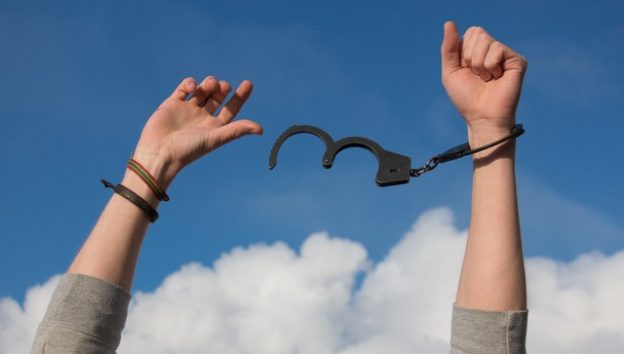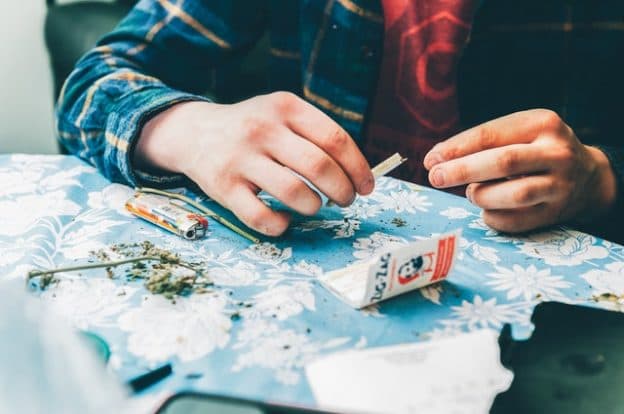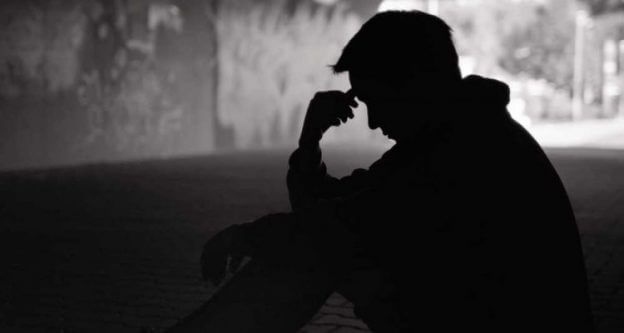As a substance abuse counselor for young adults and adolescents, the use of marijuana by young people is a topic that comes up daily. On one side of the discussion, there are those who speak of the multitude of health benefits from marijuana. On the other side of the discuss, there are those who argue that a drug is a drug and that it is never acceptable to use drugs. In this article I hope to provide a personal testimony of my own experience with marijuana and my opinion on marijuana’s effects on teenagers specifically.
My Story with Teenage Marijuana Use
I remember being in elementary school, learning about various drugs and sitting in the classroom making a personal vow to never to use drugs. Especially hearing these various stories of people overdosing from drugs, getting caught by the police, or losing everything they love. It was easy as a child to determine that drugs were bad and that I wanted to avoid them. As I grew, however, that perspective began to shift. I began to see TV shows and movies where kids sneak out and smoke weed or get drunk at a party. They made it look like a lot of fun! By middle school I had friends who were cool to me that used marijuana, and they were the rebels. My personal vow was losing it’s appeal. My idea condemning marijuana lost the foundation of its argument.
I tried marijuana for the first time when I was 14 years old. I didn’t get high, but another thing stood out about that experience – I got in no trouble whatsoever! I didn’t get caught by the police, my family had no idea, and I didn’t experience any adverse health effects. This immediately changed my perspective on marijuana and I decided to try it again.
The next time I smoked marijuana, I actually experienced its effects. At that point I felt I had every reason to continue smoking marijuana! At the age of 14, I was concerned with one thing more than anything else: having fun. Despite the fact that I had a basic understanding that drugs were bad, I did not care. I had a host of new friends that I thought were cool and getting high felt extremely positive to me. Like many teenagers who begin abusing drugs, I wouldn’t start to experience real consequences until much later in life.
Consequences of Marijuana Use and Recovery
The first time I got caught doing drugs was spring break when I was 15. My friends and I stole a little alcohol from the top of every bottle from a friend’s parents’ liquor cabinet. We drank the liquor in my room, and a few hours later one of my best friends was puking all over himself and barely conscious. Worried, I woke up my mom. She was upset at the scene she found, but I was careful to insist that “it was the first time and I won’t do it again.” I took my month’s grounding and moved on.
Gradually, using drugs and alcohol took over my life. I continued to drink, but primarily used marijuana. By the time I was a senior in high school, there were a few distinct changes in my life. I constantly argued with both of my parents. I had manipulated my mom to the point where she was okay with me using marijuana because she believed I was limiting my use to once a week. Little did she know that I was using drugs every day! At this point, my life centered around my marijuana use. I viewed it as essential to be able to use marijuana. It had become more important to me than sports, extracurricular activities, or my schoolwork. I had changed groups of friends multiple times to people who used drugs the same way I did. I tried other drugs, including LSD, prescription stimulants, and prescription benzodiazepines (Xanax). I believed that I was having fun, and looking back, the insane part is that I didn’t see anything wrong with it.
Not unsurprisingly, I began experiencing more significant consequences. I found myself in the hospital. I was nearly expelled from high school. By this time, I was completely dependent on drug use to get through the day.
Something had to change.
Thankfully, it was during this time that I was introduced to sobriety. At my family’s urging, I begrudgingly agreed to have an appointment with a professional. I got into a good treatment program that specializes in adolescent drug use in my area. Though I fought it every step of the way, I began to abstain from drug use.
During my first six months of recovery, I began to understand and accept the consequences of using other drugs besides marijuana. I gained new tools to cope with life and rebuild my broken relationships. However, I could not part or wrap my head around the negative consequences of marijuana. I didn’t realize it at the time, but I had become everything I had sworn not to be when I was younger. I talked loftily about how marijuana was actually good for the brain and led to better decision making, rather than worse.
However, around the six month point, some things finally clicked. After months of staying clean, I began to clearly see some of the real consequences from marijuana specifically.
The Turning Point in My Recovery
The counseling staff and my peers in my recovery group used to use the term “three degrees off” to describe marijuana users and pot smokers. This is not intended as an insult, it’s simply a description of the effect of marijuana on our brains.
It’s important to remember that in marijuana users, cognitive functions are affected until 28 days of abstinence. Click here to read one of the many clinical studies on the topic. What this meant for me was that my decisions were not only affected for the few hours that I felt intoxicated, they were also affected, on some level, for up to 28 days after using marijuana. Compound this with daily marijuana use, and we end up with somebody who makes chronically bad decisions and doesn’t experience the true emotional repercussions of their actions.
For the first time, I took stock of the real effects of marijuana use on my life:
I didn’t become a drug using teenager overnight. However, with my slightly altered, “three degree off” decision-making, the end result was same. Over time, I had gone from a respectable, athletic, smart teenager to someone who lied to family and friends, cheated those around him, and stole from those he loved to be able to use marijuana and obtain drugs. I was willing to manipulate and argue to get high. While my brain was in the its peak of cognitive and emotional development, I was using a substance that blocked its normal functioning.
Manipulative and dishonest behaviors became easier and easier to justify. It wasn’t a bad kid, but I was willing to do anything to protect getting high. Over time, I even moved on to using other drugs, answering the age old question of if marijuana is a gateway drug. One national study by Secades et al shows that for people who were life-time marijuana users, 44.7% moved on to other illicit drugs. Comparatively, this is significantly higher than someone who never tries marijuana in the first place. In my professional experience counseling drug using teenagers, young adults, and their families, nearly every young person who receives counseling services started with marijuana.
Why Teenage Marijuana Use is So Damaging
I especially take notice of teenagers who use marijuana. The results are in: this 2014 evidence based study showed that marijuana users who began before age 17 experienced long-term issues with executive functioning. This includes problems with abstract reasoning, verbal fluency, verbal learning, and memory. This differed from users who began using after 17.
Another study showed that users who began using marijuana before 18 were 4-7 times more likely to develop some sort of substance use disorder.
From personal experience, I see that my marijuana use held me back from gaining the real tools to succeed long-term. Rather than coping with the problems in my life, I resorted to using marijuana. Marijuana created such a strong instant gratification that I had no need to develop real friendships. Rather, I made a decision to choose friends based on whether or not they used marijuana. As my tolerance for marijuana developed, I had nothing to fall back on to create lasting self-esteem and happiness.
Giving Back
Today, I want to help prevent young people from moving backwards because they didn’t give their brains time to develop. It is not surprising to me that marijuana is the number one drug used by teens. My goal is for teenagers and young adults to find long-term happiness. In my life, I ended up finding and utilizing real self esteem building tools. I utilize the 12-steps, a sponsor/mentor, and positive relationships to help accomplish this. The result of this has been a life that is more fruitful than anything I attained when I was using marijuana or other drugs. Even if it is “only marijuana” I hope to encourage any young person to seek sobriety to support long-term success.
References
Crean, R. D. Crane, N. A. Mason, J. M. (2011, March 1) An Evidence Based Review of Acute and Long-Term Effects of Cannabis Use on Executive Cognitive Functions. Journal of Addiction Medicine, 5(1). Retrieved From https://journals.lww.com/journaladdictionmedicine/Abstract/2011/03000/An_Evidence_Based_Review_of_Acute_and_Long_Term.1.aspx
Pope, HG Jr., Gruber, A. J. Hudson, J. I. Huestis, M. A. Yurgelun-Todd, D. Neuropsychological performance in long-term cannabis users. Archives of General Psychiatry (2001, October) Retrieved from ncbi.nlm.nih.gov/pubmed/11576028/
Secades-Villa, R. Garcia-Rodriguez,O. Chelse, J. Jin. Wang, S. Blanco, C. (2014, August 2). Probability and predictors of the cannabis gateway effect: A national study. International Journal of Drug Policy, 28(2). Retrieved from https://doi.org/10.1016/j.drugpo.2014.07.011
Winters, K. C. Lee, C. S. (2008, Jan 1) Likelihood of developing an alcohol and cannabis use disorder during youth: Association with recent use and age. Drug and Alcohol Dependence, 92(1-3). Retrieved from https://www.sciencedirect.com/science/article/abs/pii/S0376871607002979?via%3Dihub







